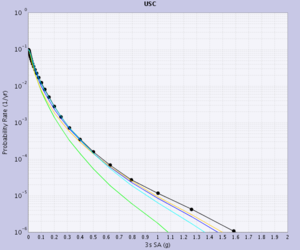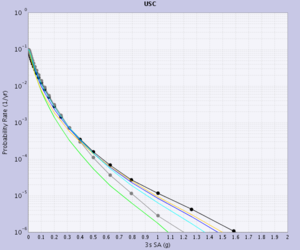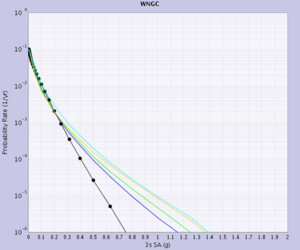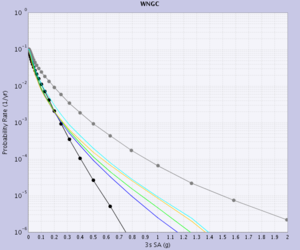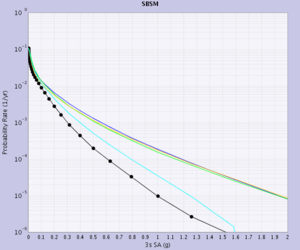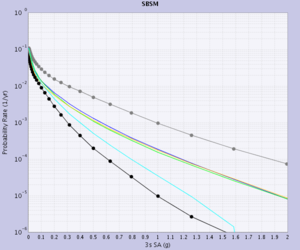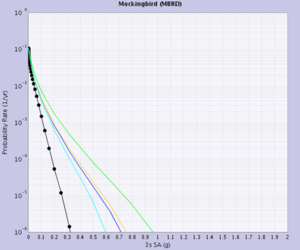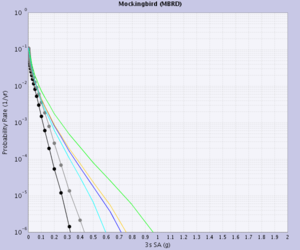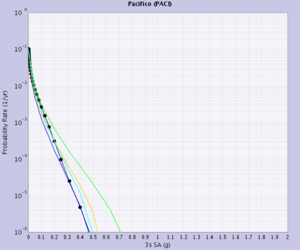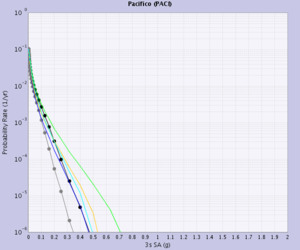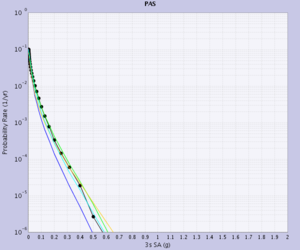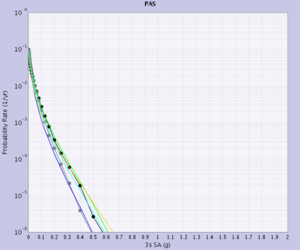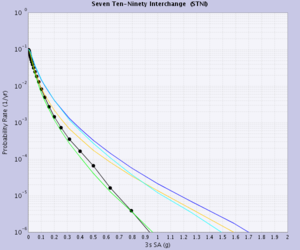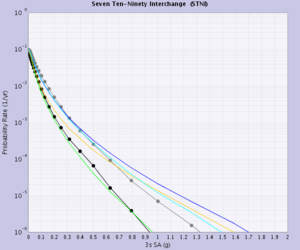Difference between revisions of "CyberShake 1.2"
From SCECpedia
Jump to navigationJump to search| Line 22: | Line 22: | ||
| PAS || 785 || 4 || [[File:PAS_ERF35_Run785_SA_3sec_04_07_2011.png|thumb]] || [[File:PAS_ERF35_Run785_CompToRun748_SA_3sec_04_07_2011.png|thumb]] | | PAS || 785 || 4 || [[File:PAS_ERF35_Run785_SA_3sec_04_07_2011.png|thumb]] || [[File:PAS_ERF35_Run785_CompToRun748_SA_3sec_04_07_2011.png|thumb]] | ||
|- | |- | ||
| − | | STNI || 786 || 4 || [[File:STNI_ERF35_Run786_SA_3sec_03_25_2011.png|thumb]] | + | | STNI || 786 || 4 || [[File:STNI_ERF35_Run786_SA_3sec_03_25_2011.png|thumb]] || [[File:STNI_ERF35_Run786_CompToRun790_SA_3sec_03_25_2011.png|thumb]] |
|} | |} | ||
Revision as of 18:04, 12 April 2011
CyberShake 1.2 introduces the use of CyberShake hazard curves using CVM-H v11.2. This requires recalculation of the SGTs.
CyberShake 1.1 introduced a second generation rupture generator to the CyberShake calculation. Now, when we compare CyberShake hazard curves to one another, we must define both the CVM used (CVM-S4 or CVM-H), and which rupture set was used (CyberShake 1.0 or CyberShake 1.1).
The following curves compare CyberShake hazard curves that both use the CyberShake 1.1 rupture set. The differences between the curves are attributed to only the different CVM's used.
Results
| Site | Run ID | Rupture Variation | 3s SA curve | Comparison curve with CVM-4 (CVM-4 curve in gray) |
|---|---|---|---|---|
| USC | 778 | 4 | ||
| WNGC | 781 | 4 | ||
| SBSM | 782 | 4 | ||
| MBRD | 783 | 4 | ||
| PACI | 784 | 4 | ||
| PAS | 785 | 4 | ||
| STNI | 786 | 4 |
